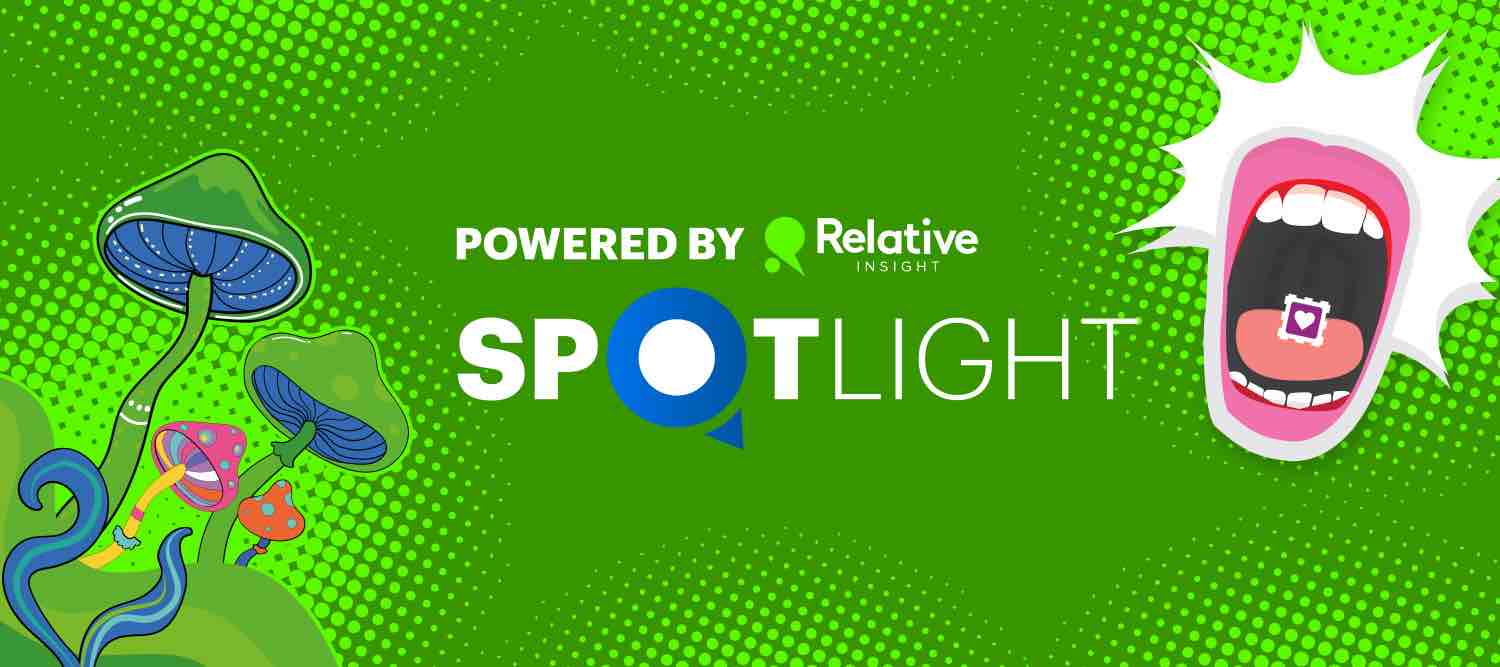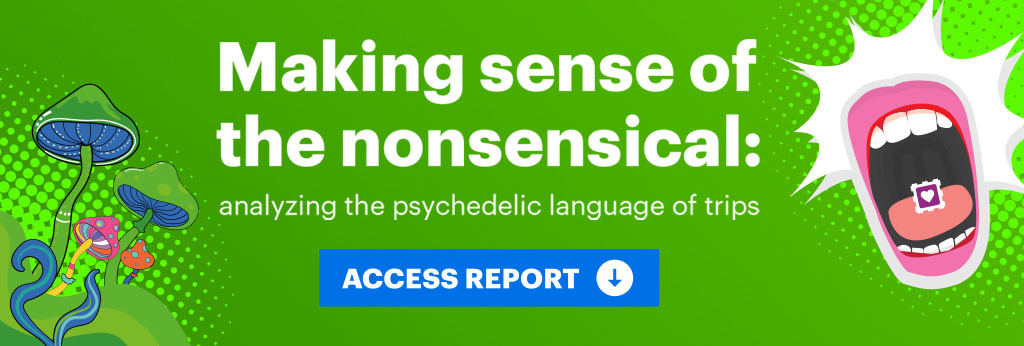Insights professionals share captivating text analytics examples

“As researchers we love numbers, but there’s something to be said about uncovering a cultural thread that you would never have been able to do just by looking at numbers.”
This summary of the power of text analytics from Idil Cakim, Senior Vice President, Research and Insights, at Audacy, encapsulated the key theme in our latest Spotlight Series webinar. She added:
“People are always impressed by the volume of conversation analyzed when uncovering these stories. There’s no way you could do that manually in a decent way, you’d introduce errors and bias. It would take years – we don’t have years!”
She was joined by Rina Plapler, Strategy Partner at MBLM, Carver Low, Group Director, Strategy, at Sullivan, James Cuthbertson, Chief Revenue Officer at Relative Insight and Maddy Croke, Account Director at Relative Insight.
The quintet recounted some of the fabulous findings they’ve uncovered in text data. These text analytics examples ranged from unlocking brand perception through to understanding the lexicon of psychedelic trips.
You can watch the full session by viewing the video below.
Audio is the ritual
Idil cited Audacy’s audio rituals study as an excellent example of text analysis uncovering interesting insights.
Going into the research, the company had treated audio as something which accompanied people’s daily routines – the ‘companion medium’. However, using text analysis, Idil and her team uncovered that listeners planned their day around audio, such as running for a specific length of time so they could listen to a new podcast episode.
“’Audio is the ritual’ became the new headline of a thought leadership platform,” Idil noted, adding: “It helped us build stories around these seemingly mundane activities and just how important they were in terms of engagement.”
Audacy’s research demonstrated to brands that their messaging was more likely to resonate with audiences if they were able to join these audio rituals in a meaningful and contextual way. The company was able to show its clients a ‘path of authenticity’ to connect with audiences.
Delving into brand perception
Text analysis has helped MBLM to unlock even greater insights in its Brand Intimacy Study. The report examines perception of 600 leading brands, including rankings and profiles for each.
Rina outlined how the firm used Relative Insight to analyze over 1.5 billion words of online conversation, exploring the emotional connection consumers had with these companies. The sheer volume of text data would’ve been impossible for her team to look at manually. “All words have meaning, but trying to boil the differences between Tesla and Toyota or iTunes and Pandora… is an enormous undertaking,” Rina noted.
The team at MBLM used text analytics to pinpoint fascinating individual brand insights, such as people playing YouTube videos to help them sleep – with the phrase “eat, sleep, YouTube, repeat” overindexing. However, they also used text data to identify wider trends across multiple business sectors.
“Looking at both anecdotal and big picture is where we find the magic. We ask ‘what’s the outlying quirkiness?’ and ‘what’s the general sentiment?’. That gives us insight not just into the emotional connections, but also the way in which people speak about brands – which is interesting to translate back to brand owners.”
Glassdoor reviews pave the way to innovation
Carver highlighted how Sullivan helped one of its clients to delve deeper into the concept of innovation. It’s hard to access information on innovation within different organizations, however, the agency was able to use Glassdoor reviews to get a snapshot.
The challenge with Glassdoor as a text data source is that it’s full of inherent biases. However, using text analytics, Sullivan cut through the noise and identified what constituted innovation in various businesses. It was able to identify an insight which provided real value to its client.
“There were pretty distinct ways companies talked about innovation,” said Carver. He added: “While you associate innovation with collaboration, one of the companies was antithetical to that. They were innovative, but they talked a lot about silos and working in a vacuum. We parsed out that where they were more innovative was on the product side – really process. That gave us another lens to take back to the client and say ‘here’s another way where you can promote innovation which might be more true to you’.”
The client has acted upon this information by building a new innovation team which will eventually focus on the product and process mindset surfaced through Sullivan’s analysis.
Taking a trip through text analysis
Relative Insight’s James Cuthbertson opened the session with one of the more fantastical examples of text analytics. He presented an overview of our latest report: Making sense of the nonsensical: analyzing the psychedelic language of trips.
James highlighted how we were able to derive insights from psychedelic drug-takers’ trip descriptions. He demonstrated some of the comparisons made within the report and the insights these surfaced – including variations in language used by opposite genders and those taking different drugs.
However, amongst the amusing quotes, James made an important point about the power of text analysis:
“Text analytics, especially powered by comparison, can help you undercover things you didn’t know to search for – and those things can be truly insightful. We’ve applied this in a slightly flippant way to people’s trip experiences, but the idea is that we could apply it to pretty much any topic you could think of.”
Discover additional text analytics examples
If your interest has been piqued by these text analysis use cases, then we’ve got plenty more for you. You can find more sector-specific in our blog, or speak to one of our team using the button below to discover how your business can benefit from text analysis.
